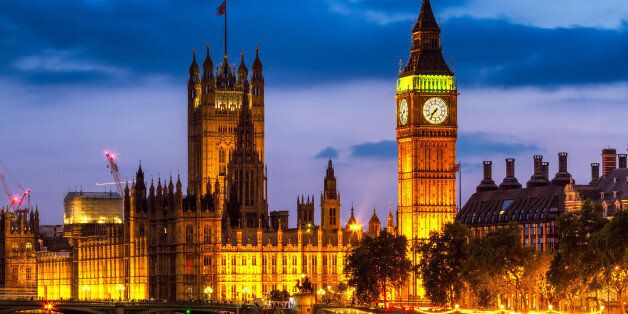
A new report has highlighted the threat to London's creative communities from the spread of urban regeneration.
The London Assembly Regeneration Committee report 'Creative tensions: Optimising the benefits of culture through regeneration', published March 7th, makes a number of recommendations to the Mayor of London, Sadiq Khan, to protect London's cultural offering.
Amongst the recommendations, the report focuses on the Mayor developing a bold programme to create and promote sustainable culture in the capital. This is especially important considering the report found that some 3,500 artists are likely to lose their places of work by 2019.
I met with Navin Shah MP, Chair of the Regeneration Committee to get to the bottom of the findings.
Mr Shah, tell us about the origins of this report; why was it originally commissioned?
The report was commissioned because the London Assembly Regeneration Committee recognises culture as a key factor to London's success. The creative industries account for one in six jobs in London with almost a third of creative jobs in the UK based in London. The Committee wanted to work out what further work the Mayor of London could do to protect and enhance London's cultural offer.
What is the purpose of the report?
The purpose of the report is to shine a light on this important part of London's success and identity. We know that 80 per cent of visitors to London cite 'culture and heritage' as the reason for their visit. In order for London to continue to a be a success story in terms of its unique and diverse cultural offer, important issues like workspace, grassroots venues and community involvement need to be highlighted. We were also aware of the tension between wanting to regenerate large areas of London and the impact this is having on those who create our world famous artistic life.
How would you summarise the findings?
We received 123 written submissions from artists and creative organisations. The response we got back from the sector was fantastic. We found that there are tensions between 'old' and 'new' residents and communities, as people are priced out due to rising rents and "rocketing property costs". Certain groups feel marginalised and left out, which leads to homogenisation of the type of residents in an area and the culture on offer. Also industrial land and buildings are being lost to housing developments. Developers may include live/work space in new developments, but often such schemes are unaffordable and not utilised as workspace.
Were you surprised by any of the findings?
We weren't really surprised by our findings, as it was evident from the outset what the main issues are. We were pleasantly surprised by the amount of feedback we did receive. Clearly this is a sector that is passionate and are strongly engaged. Many people, not just the artists themselves, are worried by the fact that artists are not just leaving London for places cheaper in the UK, but they are moving to cities like Berlin and Lisbon that can offer them the affordable places to work.
How essential are the creative industries to London?
They are absolutely vital to the fabric and success of London. London is globally renowned as a city of culture. From grassroots venues in Tottenham to small theatres in Richmond, it is diverse, unique and spread right across London. People visit London because of the culture on offer here.
How can we begin to tackle the decline of outlet for creativity in London?
The report makes a series of recommendations to the Mayor on protecting grassroots venues and providing affordable workspace for artists and creatives. For example the Mayor should push for the new London Plan to include an affordable cultural workspace policy that ensures there is affordable cultural workspace in every large new planning development. Also there is a big issue with quality data, we need to carry out research to better understand 'affordability'. The Mayor should urgently pilot a Creative Enterprise Zone in London, which includes both affordable housing and workspace co-located together. We heard there is strong grassroots support for an area such as Hackney Wick, which has the biggest concentration of artists in Europe, to be a pilot Creative Enterprise Zone. It is also really important that not just iconic venues are protected, but also grassroots venues.
Who, to your knowledge, is leading the field in combining regeneration with retaining the creative lifeblood of London?
Creative Barking and Dagenham is a great example of a programme, that leads the field in combining regeneration with retaining the creative lifeblood of London. Funded by the Arts Council and the London Borough of Barking and Dagenham, Creative Barking and Dagenham works in partnership with the community to really develop local people's interest in the arts and creativity. Its partners include business, such as the Barking Enterprise Centre, artists such as Studio3 Arts and local volunteers in the community. Through its Cultural Connectors Programme, 120 local adult residents build enthusiasm for arts and creativity at a local level, as well as helping with events and marketing.
The report contains recommendations for the Mayor of London. Who else is influential in making the changes the report recommends?
The Mayor of London has a lot of power in making the changes the report recommends. However there are a number of bodies and organisations that should take stock of what we are saying, for example within the GLA family alone, the London Legacy Development Corporation, who lead work developing the Olympic Park and surrounding areas and Transport for London are influential in making changes to help protect and enhance London's culture. All London boroughs have a responsibility to protect and nurture their own local artists and creatives, often their local knowledge and ability to work with artists on a day-to-day basis is just the kind of support needed.
What is your advice to creatives in London struggling to find a place to work/practice their craft?
We know this is a huge issue, with many artists and organisations telling us that their one major concern is the lack of affordable workspace in London. Artists and creative people want to be near to one another and it is really important to keep networks going and to group together as much as possible. Lobby your local authority to be more pro-active and make them aware of the need for affordable workspace so they protect what already exists and ensure that new space is created wherever there is an opportunity. It will be good for their local economy.
How can the average person help in maintaining the creative integrity of the capital?
I would say, go out, visit galleries, watch a play in a small theatre, buy artwork from local artists, attend a gig, support culture and creativity in any way possible. Experiencing what is on offer is a fantastic way to maintain our cultural integrity and diversity in the capital. If you don't use it, you may lose it.
Follow @LondonAssembly and tweet about the report using #AssemblyRegeneration or #creativeLondon
This interview originally ran on www.afternynemagazine.com
